I checked my bag to make sure I had packed my ankle-length skirt (to wear over my pants) and gave myself a thorough once-over in the mirror to confirm that I hadn’t been too heavy-handed with the makeup. I was a jumble of nerves and to say I was excited was an understatement. The preparation could have very well have been for a date, but it wasn’t. In fact, quite the opposite.
I was on my way to one of the holiest sites in the world: the monasteries of Meteora.
Awe-inspiring in their construction, the monasteries were built on jagged cliffs hundreds of feet in the air and have largely remained the same since the 14th century. The earliest inhabitants, a group of determined Christian Orthodox monks, chose to live in isolation and pure devotion to God and erecting monasteries on elevated pillars literally made them closer to the Divine. They were created to serve monks and nuns who followed the teachings of the Eastern Orthodox Church. A basket-and-pulley system enabled monks to travel up and down the igneous rock formations only when bringing food and supplies up to the monasteries. It is said that the monks replaced the traveling baskets and ropes only when “God broke them”. To live in such difficult conditions–in complete isolation and solitude–was thought to be the monks’ greatest achievement.
The monks separated themselves from this world; fleeing in the deserts, crossing the seas, climbing on steep and high mountains. They stop at nothing in their everlasting desire to witness the Divine Light; to experience the presence of God in their hearts. – from visitmeteora.travel
GETTING THERE
There are several ways to make the trek to Meteora, but I had the opportunity to drive from Delphi (considered by ancient Greeks to be the “navel” or center of the world) to the holy site as part of a 4×4 caravan with Israel-based travel company Tripology. While traversing over rough terrain through steep mountains and navigating dangerously narrow ledges that would make the most seasoned driver nervous, there was almost a palpable change in the air. Something felt different–a certain euphoric lightheadedness that wasn’t attributable to the change in elevation. It can only be described as divine. I would imagine that even a non-believer would find Meteora a sacred place.
VISITING THE MONASTERIES
Out of the more than 20 original Byzantium structures, only 6 remain and are functioning. Luckily for visitors, the UNESCO site monasteries are now accessible by staircases and pathways carved into the rock formations.
Of the 6 functioning monasteries, the Holy Monastery of St. Stephen and the Holy Monastery of Roussanou are inhabited by nuns while the remainder are inhabited by monks. The total monastic population of the Meteora monasteries in 2015 was 56, comprised of 15 monks in four monasteries and 41 nuns in two monasteries.
VISITATION RULES
In their earliest incarnation, monastery rules barred women from entry. Though that rule was abolished long ago, some women may find the modern-day rules a bit restrictive. Ankle-length skirts must be worn at all times (there is a basket at the point of entry where they can be borrowed but, in all honesty, they seemed to not have been laundered in ages, so I would suggest bringing or wearing your own). They can be easily slipped over your own attire. Tops shouldn’t be too revealing. For the most part, photography is allowed except in certain restricted areas (the church and grottoes).
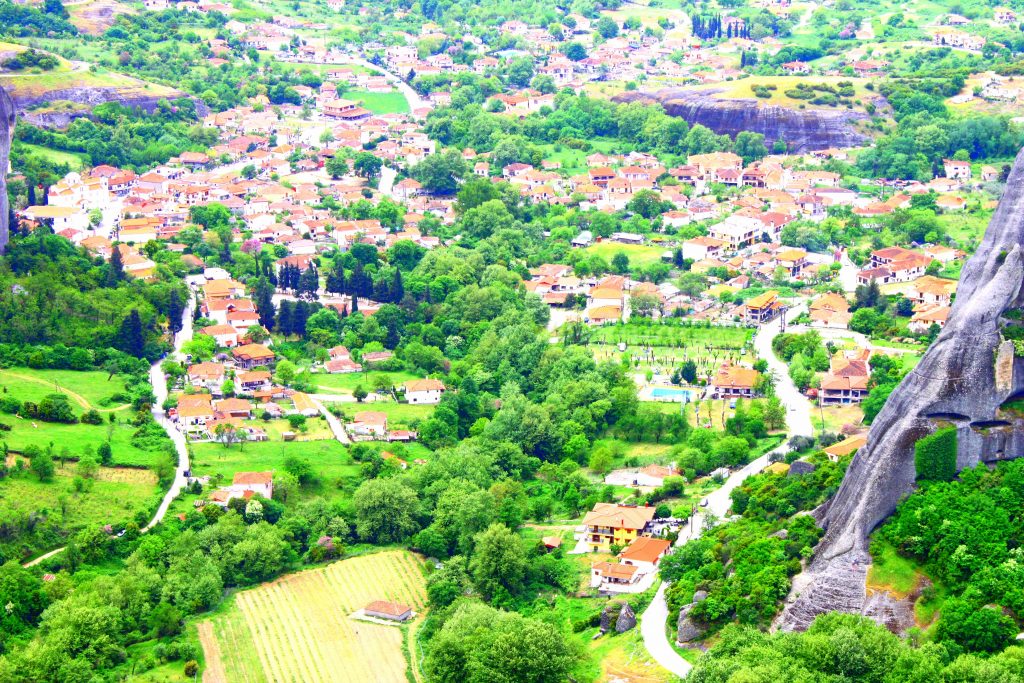
The town of Meteora 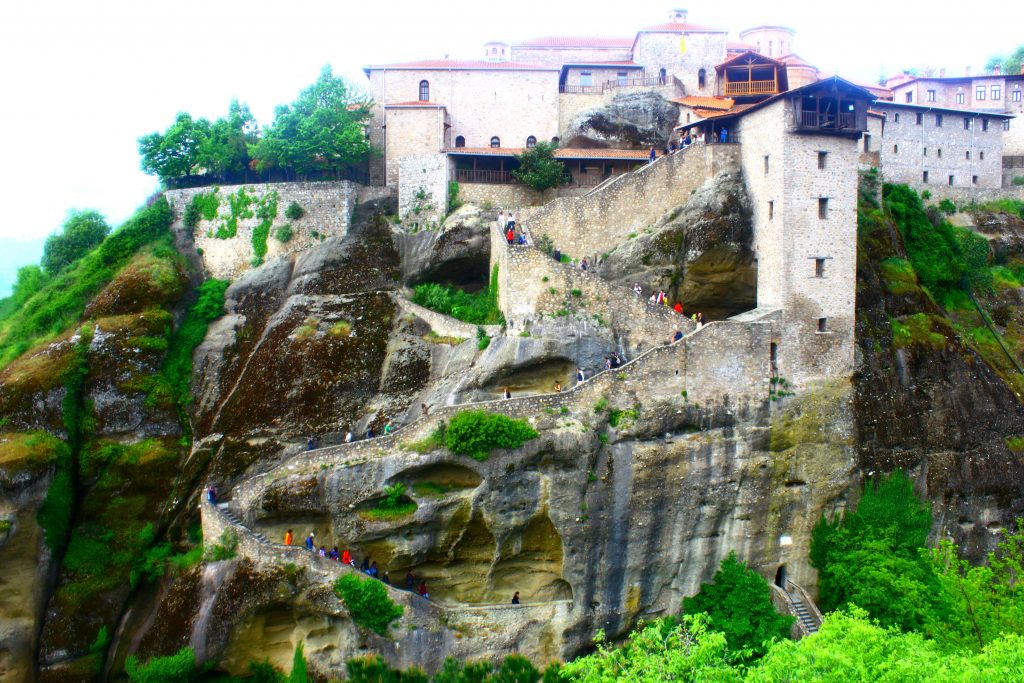
Visitors can enjoy easier access to the monasteries 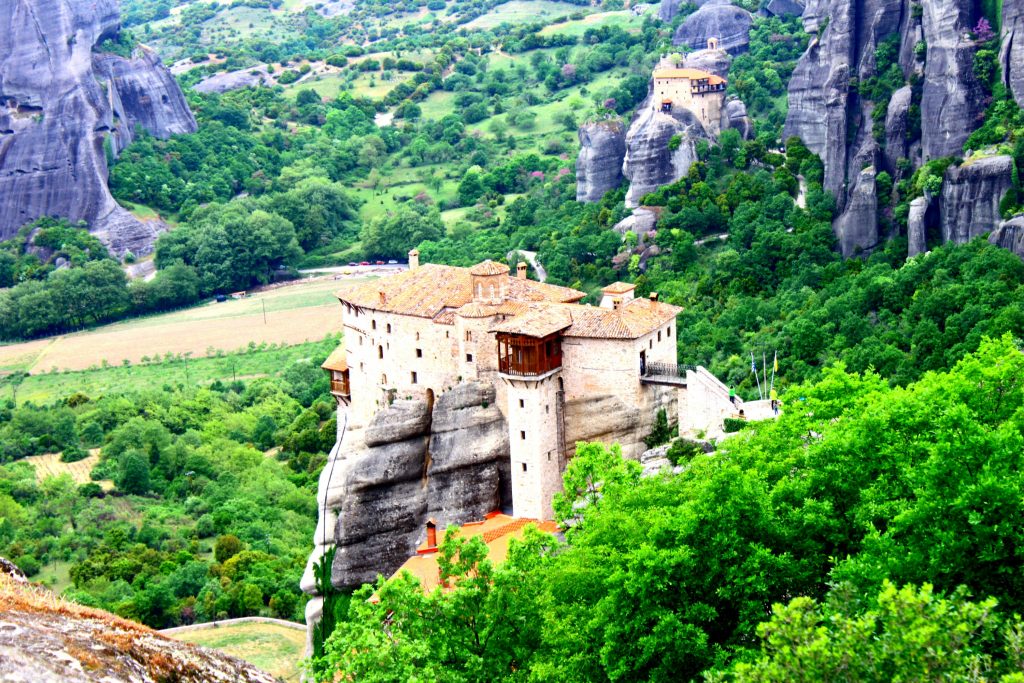
Closer to heaven 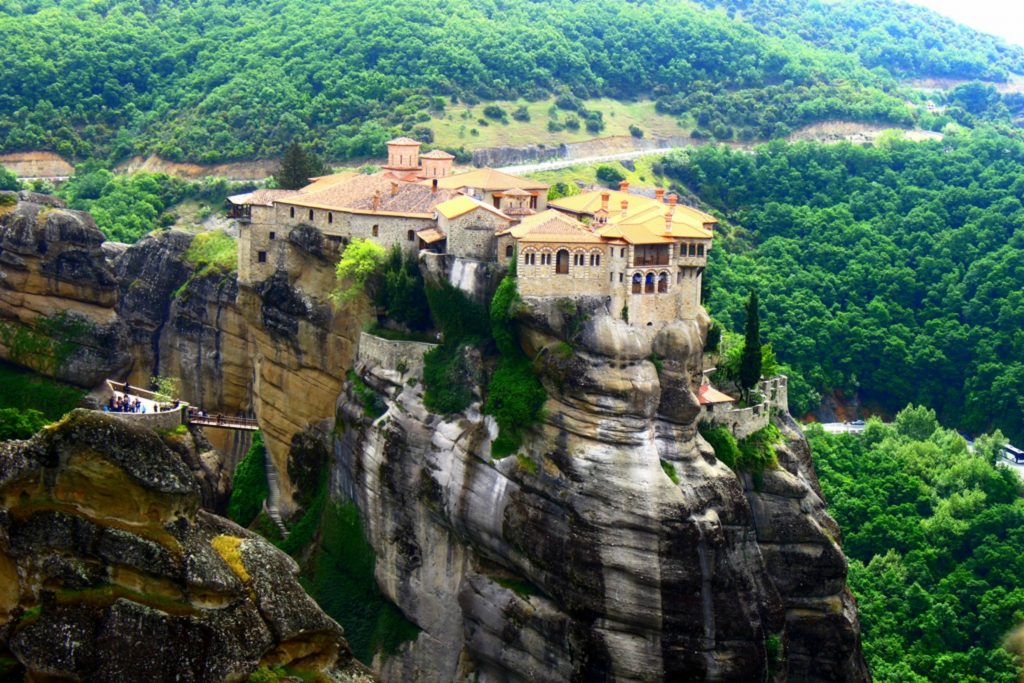
A bird’s eye view of a monastery 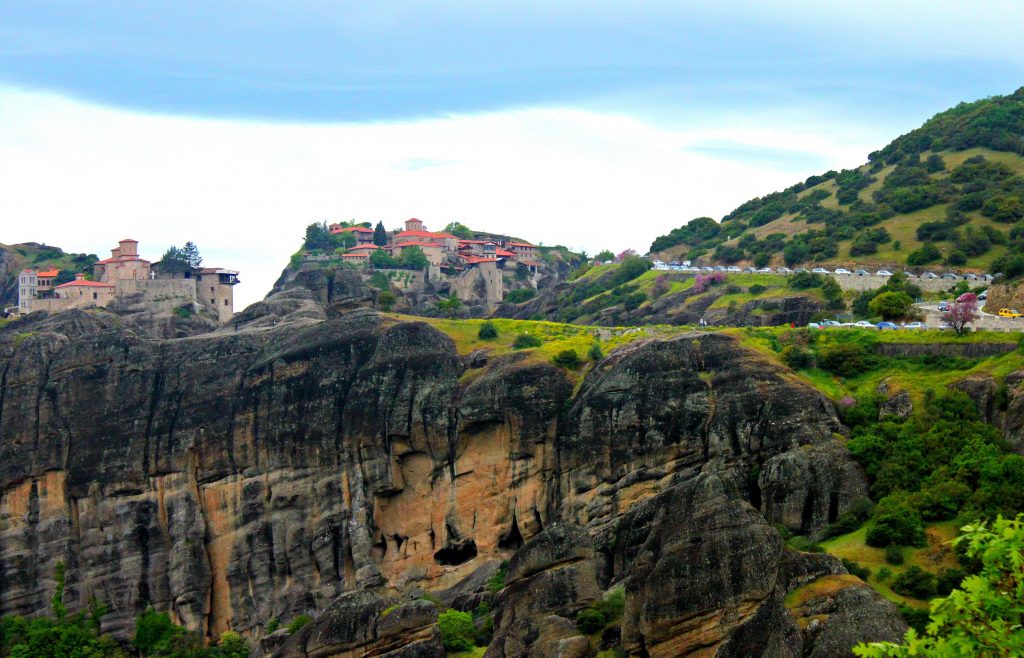
A geologist’s dream–the unique igneous rock formations of Meteora

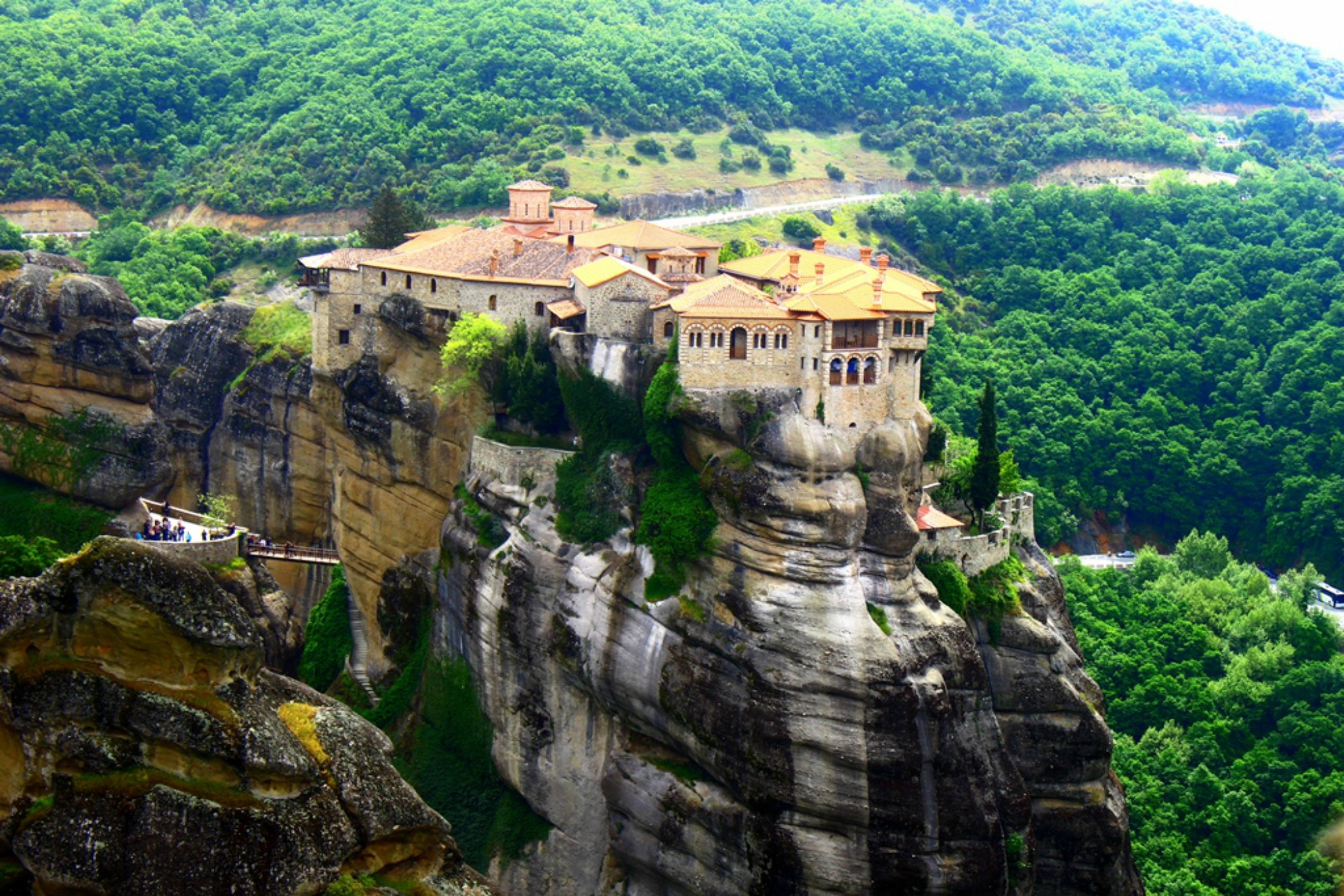
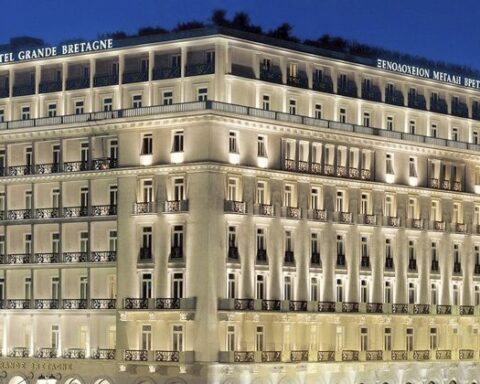

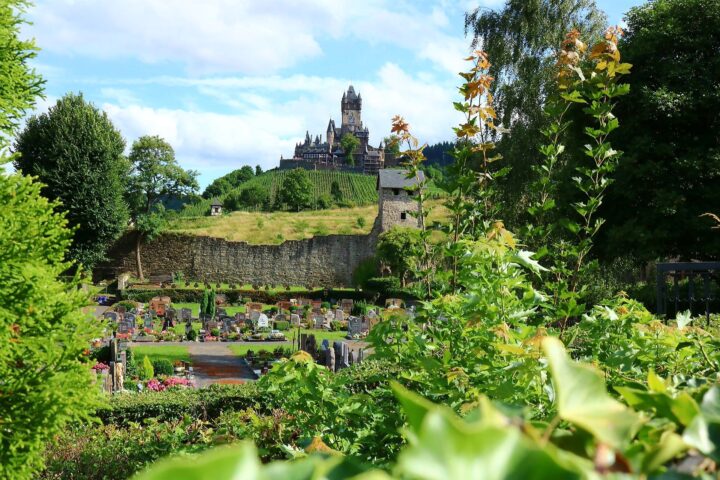
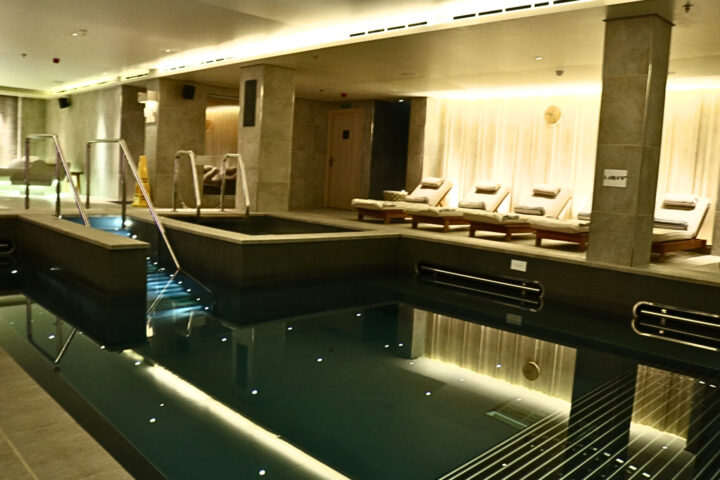
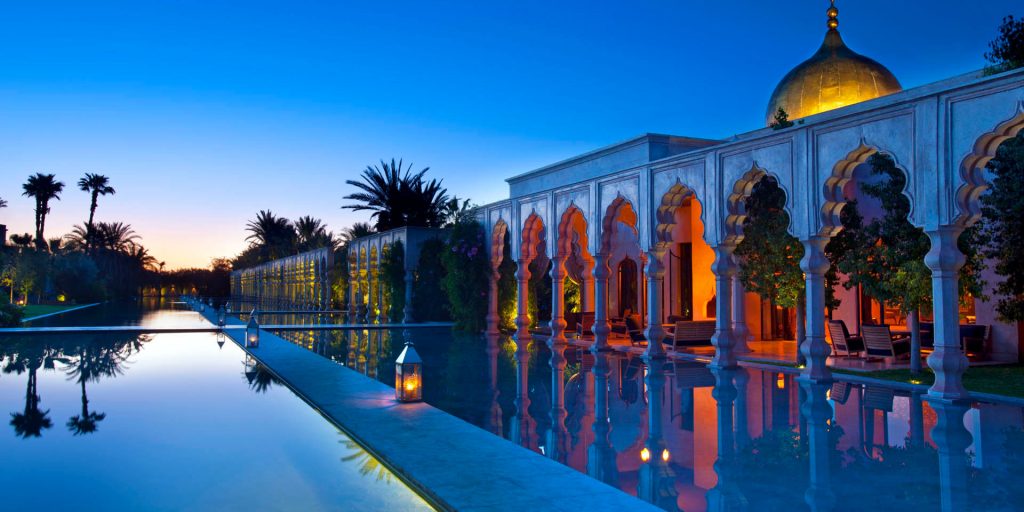


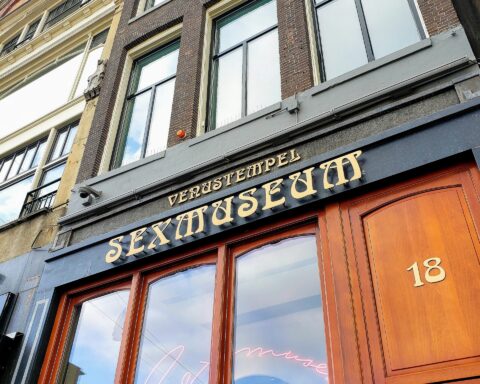
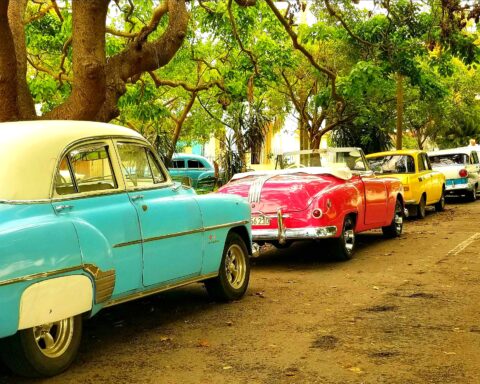

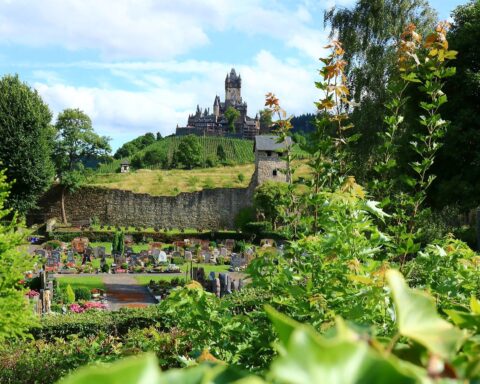
What a great trip. Unforgettable. These pictures take me back.
Don’t they? I have travel photos occupying more space on memory cards than I care to admit. I was going through some today and saw these photos. Good times, good times.